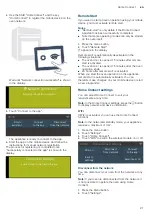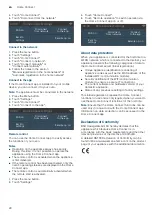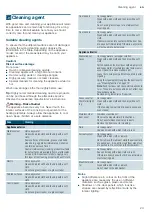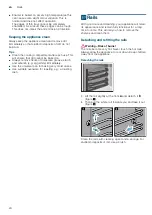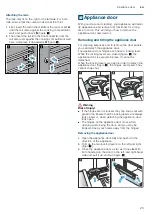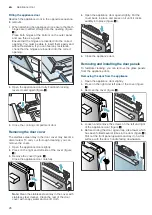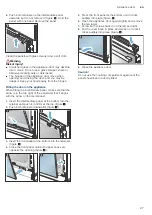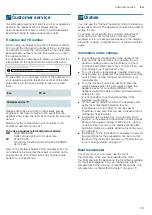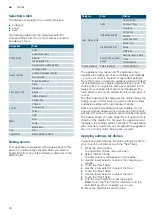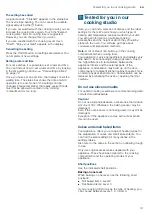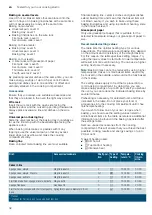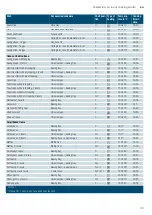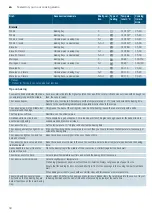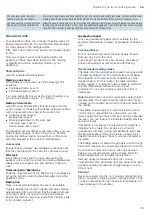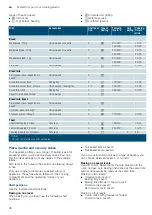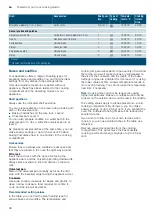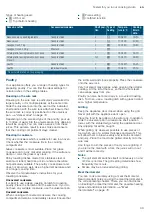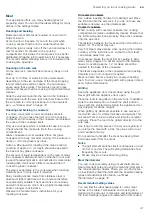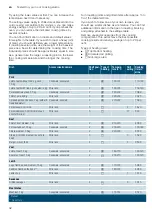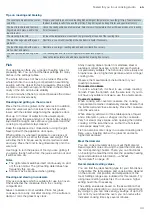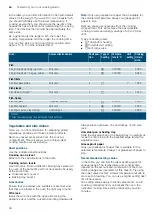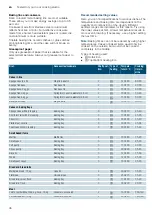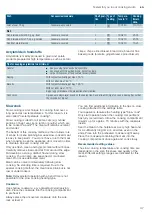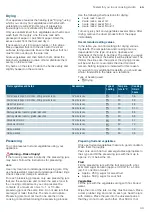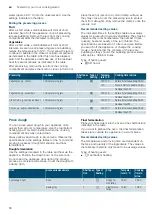
Tested for you in our cooking studio
en
35
Bread and rolls
Your appliance offers you a range of heating types for
baking bread and rolls. You can find the ideal settings
for many dishes in the settings tables.
Also refer to the notes in the section on allowing dough
to rise.
Only use original accessories supplied with your
appliance. These have been tailored to the cooking
compartment and the operating modes of your
appliance.
Shelf positions
Use the indicated shelf positions.
Baking on one level
When baking on one level, use the following shelf
positions:
■
Tall baked items: Level 2
■
Flat baked items: Level 3
If you are using 4D Hot air as the type of heating, you
can choose between levels 1, 2, 3 and 4.
Baking on two levels
Use 4D hot air. Baked items that are placed into the
oven on trays or in baking tins/dishes at the same time
will not necessarily be ready at the same time.
■
Universal pan: Level 3
Baking tray: Level 1
■
Baking tins/dishes on the wire rack
First wire rack: Level 3
Second wire rack: Level 1
By preparing several dishes at the same time, you can
make energy savings of up to 45 per cent. Position
baking tins/dishes next to one another or offset and
vertically stacked in the cooking compartment.
Accessories
Ensure that you always use suitable accessories and
that they are placed in the oven the right way around.
Wire rack
Insert the wire rack with the open side facing the
appliance door and the curved lip pointing downwards.
Always place ovenware, tins and dishes on the wire
rack.
Universal pan or baking tray
Slide the universal pan or the baking tray in carefully as
far as the limit stop with the bevelled edge facing the
appliance door.
Baking tins
Dark- coloured metal baking tins are most suitable.
Tinplate baking tins, ceramic dishes and glass dishes
extend baking time and mean that the baked item will
not brown evenly. If you wish to bake using these
baking tins/dishes and using top/bottom heating, slide
in the tin/dish at level 1.
Greaseproof paper
Only use greaseproof paper that is suitable for the
selected temperature. Always cut greaseproof paper to
size.
Frozen products
Do not use frozen products that are heavily frosted.
Remove any ice on the food.
Some frozen products may be unevenly pre-baked.
Uneven browning may remain even after baking.
Recommended setting values
The table lists the optimal heating type for various kinds
of bread and bread roll. The temperature and baking
time depend on the amount and consistency of the
dough/mixture. For this reason, the table specifies
setting ranges. Try using the lower values to start with.
A lower temperature will result in more even
browning.You can use a higher setting next time if
necessary.
Note:
Baking times cannot be reduced by using higher
temperatures. The bread or bread rolls would only be
cooked on the outside, but would not be fully baked in
the middle.
The setting values apply to food that is placed into a
cold cooking compartment; by doing this, you can
make energy savings of up to 20 per cent.If you preheat
the oven, you can reduce the indicated baking times by
several minutes.
Preheating is necessary for selected food, and this is
indicated in the table. Do not place your food or
accessories into the cooking compartment until it has
finished preheating. Some food turns out best if it is
baked in several stages. These foods are indicated in
the table.
The setting values for bread dough apply to both dough
placed on a baking tray and dough placed in a loaf tin.
If you wish to follow one of your own recipes when
baking, you should use the setting values listed for
similar baked items in the table as reference.
Remove unused accessories from the cooking
compartment. This will ensure that you achieve the best
possible cooking results and energy savings of up to
20 per cent.
Caution!
Never pour water into the hot cooking compartment or
place cookware containing water onto the bottom of the
cooking compartment. The change in temperature can
cause damage to the enamel.
The cake looks good, but is not
cooked properly in the middle.
Use a lower temperature and bake slightly longer; if necessary, add slightly less liquid. For cakes with a moist
topping, bake the base first. Sprinkle it with almonds or breadcrumbs and then place the topping on top.
The cake cannot be turned out of the
dish when it is turned upside down.
Allow the cake to cool down for 5 to 10 minutes after baking. If it still sticks, carefully loosen the cake around
the edges again using a knife. Turn the cake tin upside down again and cover it several times with a cold, wet
cloth. Next time, grease the baking tin/dish and sprinkle with breadcrumbs.

